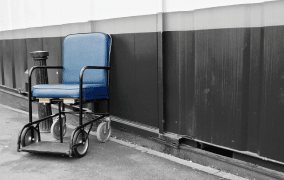If you have a disability, you may be wondering if you are eligible for Social Security Disability Insurance (SSDI) benefits. SSDI is a government-provided insurance program that helps disabled people cover some of the costs associated with having a disability. This blog post will explain what SSDI benefits are and how to qualify for them. Keep reading to learn more.
What are SSDI benefits?
SSDI benefits are monthly payments that are provided to disabled people who meet the program’s eligibility requirements. The amount of the benefit is based on the person’s earnings history. For instance, someone who has worked for many years and earned a high income will receive a higher benefit than someone who has only worked for a few years or earned a low income. In addition to the monthly payments, SSDI also provides eligible individuals with health insurance coverage through Medicare. This means that SSDI can help people with disabilities cover the costs of their medical care. Rest assured that understanding the qualifications for disability is pretty straightforward. All you need to do is to take the time to research to have a clear understanding of the guidelines set by the Social Security Administration (SSA).
How can you qualify for SSDI benefits?
Type of disability
To qualify for SSDI benefits, you must have a disability that is expected to last at least one year or result in death. For instance, someone who is blind or has a severe physical disability would likely meet this criterion.
The SSA uses a five-step process to determine if someone is disabled.
- First, the SSA will look at whether you are working. If you are working and earning more than a certain amount of money, you will not be considered disabled.
- Second, the SSA will consider whether your disability is severe. A disability is considered severe if it interferes with your ability to do basic work activities.
- Third, the SSA will determine whether your disability is on the list of disabilities that automatically qualify for benefits. If your disability is not on the list, the SSA will consider whether it is similar to a listed disability.
- Fourth, the SSA will decide whether you can do the work you did before you became disabled.
- Fifth, the SSA will decide whether you can do any other type of work.
If you are found to be disabled at any point in this process, you will qualify for SSDI benefits.
Work history
In addition to having a disability, you must also have worked enough years to qualify for SSDI. The number of years you need to have worked depends on your age. For instance, someone who is younger than 24 needs to have worked for one and a half years in the past three years to qualify, while someone who is older than 60 needs to have worked for at least 20 years. If you are over the age of 24, you will need to have worked five out of the past ten years.
If you have not worked enough years to qualify based on your age, you may still be eligible for benefits if you have enough “work credits.” You earn work credits when you work and pay Social Security taxes. You can earn up to four credits per year. Similarly, the number of credits you need to qualify for SSDI depends on your age. For instance, someone who is younger than 24 needs six credits, while someone older than 60 needs 40 credits.
Social Security payments
In addition to meeting the work history requirements, you must also have paid into Social Security through your taxes. If you have not paid into Social Security, you will not be eligible for SSDI benefits. For this reason, it is a good idea to keep up with your Social Security taxes throughout your working years. By doing so, you will ensure that you are eligible for SSDI benefits if you become disabled.
Income and resources
To qualify for SSDI benefits, your income and resources must fall below a certain level. Income includes money that you earn from working as well as other sources, such as interest and dividends. Resources include things like cash, stocks, and bonds. The income limit is different for people who are blind and for people who are not blind. It also differs based on marital status. For instance, the limit on resources is $2000 for an individual and $3000 for a couple. This means that if you are married and have more than $3000 in resources, you will not qualify for SSDI benefits.
Application process
-
Contact SSA
If you think you may be eligible for SSDI benefits, the best way to find out is to contact the SSA. The SSA will be able to tell you if you meet the program’s eligibility requirements and help you apply for benefits. More often than not, the SSA will require that you apply for benefits. The application can be completed online, over the phone, or in person. If you complete the application online, you will need to create an account on the SSA’s website. Once you have created an account, you will be able to log in and fill out the application. If you complete the application over the phone, you will need to answer a series of questions. The SSA representative will then enter your answers into the system.
-
Prepare documents
Applying for SSDI benefits can be a long and complicated process. The SSA requires a lot of documentation to determine if you are eligible for benefits. This documentation includes medical records, work history, and proof of income. The SSA will also require you to undergo a medical examination. If you are approved for SSDI benefits, you will begin receiving payments after a five-month waiting period. These payments will continue as long as you remain disabled and meet the program’s eligibility requirements.

SSDI benefits can provide disabled people with the financial assistance they need to cover the costs associated with their disability. If you think you may be eligible for SSDI, contact the SSA today to begin the application process. Rest assured that with a little bit of patience, you will be on your way to receiving the benefits you need and deserve.




